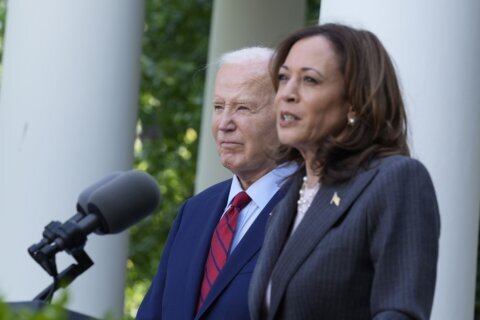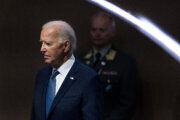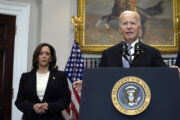Looking to lower volatility in a portfolio or produce steady income? Popular alternatives to dividend stocks are fixed-income assets, which pay out a defined stream of income.
Commonly, this takes the form of bonds, which are essentially IOUs investors can buy from various entities like governments and corporations. In exchange for a principal payment that’s on loan until the bond’s maturity, the investor receives steady coupon payments according to a fixed interest rate.
However, bond investing can be complex given that individual bonds are traded over the counter and require a great deal of calculation to correctly price.
“Given the higher risks and costs associated with portfolios of individual bonds, and the time they take to manage, most investors are better served by low-cost mutual funds and exchange-traded funds, or ETFs,” says Chris Tidmore, senior manager at Vanguard’s Investment Advisory Research Center in Wayne, Pennsylvania. “This is particularly true in the case of municipal and corporate bonds, which are less liquid and harder to purchase than Treasury bonds.”
Bond mutual funds and ETFs therefore do the hard work of selecting and managing a portfolio of bonds on an investor’s behalf. All that’s left for the investor to do is buy shares, which will grant them exposure to the returns and income of the fund’s underlying basket of bonds.
“The main benefit for investors is convenience,” Tidmore says. “Bond funds offer significant time savings over building and managing portfolios of individual bonds yourself, and allow investors to build a broadly diversified bond portfolio with only a few funds.”
[Sign up for stock news with our Invested newsletter.]
Another perk? Higher diversification. To achieve sufficient diversification by buying individual bonds, investors need to ensure adequate coverage across bond issuers, geographies, credit quality and maturities, which can become overwhelming. Investing in a bond fund can solve that with a single ticker.
Here’s a look at five great fixed-income mutual funds and ETFs to buy in 2023:
| Fund | Expense Ratio |
| iShares Core U.S. Aggregate Bond ETF (ticker: AGG) | 0.03% |
| Fidelity U.S. Bond Index Fund (FXNAX) | 0.025% |
| Nuveen Floating Rate Income Fund (NFRIX) | 0.71% |
| Schwab Long-Term U.S. Treasury ETF (SCHQ) | 0.03% |
| Vanguard Total World Bond ETF (BNDW) | 0.05% |
iShares Core U.S. Aggregate Bond ETF (AGG)
“Some of the best bond ETFs have low fees, track close to their net asset value, or NAV, very tight bid-ask spreads of a penny or less, and performance that closely hugs its benchmark,” says Michael Ashley Schulman, partner and chief investment officer at Running Point Capital Advisors in El Segundo, California. A great example here is AGG, which tracks the benchmark Bloomberg US Aggregate Bond Index for a 0.03% expense ratio, or $3 annually per $10,000 invested.
As a popular barometer of overall U.S. fixed-income performance, AGG has attracted strong investor inflows since inception, having accumulated nearly $90 billion in assets under management. The ETF trades with a very high 30-day average volume of about 5.4 million shares, along with a 30-day median bid-ask spread of just 0.01%, pointing to its extremely strong liquidity.
In terms of portfolio composition, AGG holds over 10,000 government and investment-grade corporate bonds of all maturities, averaging out to a duration of 6.3 years. All else being equal, a 1-percentage-point increase in rates would cause AGG to fall by 6.3%, and vice versa if rates fall. Currently, AGG pays a weighted yield to maturity of 4.2%, a theoretical measure of return if all of its underlying bonds were held to maturity.
Fidelity U.S. Bond Index Fund (FXNAX)
Bond ETFs like AGG tend to be highly liquid but there is a downside: the difficulty of automating investments. While investors could set recurring purchases and use fractional shares, automatically investing in an ETF tends to be less intuitive than a traditional mutual fund. A good alternative here that allows for consistent contributions of any amount is FXNAX.
In terms of composition, FXNAX is nearly identical to AGG given that both funds track the Bloomberg U.S. Aggregate Bond Index. With FXNAX, investors are looking at a duration of 6.2 years and a 30-day SEC yield of 4%. Its portfolio consists of many of the same U.S. government Treasurys, agency bonds, mortgage-backed securities and investment-grade corporate bonds as AGG.
FXNAX’s main value proposition is a combination of low fees and high accessibility. Like many Fidelity funds, FXNAX does not charge transaction fees, 12b-1 fees or sales loads. The fund also does not have a minimum investment requirement, making it a great pick for investors starting out. Finally, FXNAX charges a rock-bottom expense ratio of just 0.025%.
[SEE: 9 of the Best Bond ETFs to Buy Now.]
Nuveen Floating Rate Income Fund (NFRIX)
Investors looking for more control when it comes to their bond holdings can opt for actively managed bond funds. These funds do not track an index like the Bloomberg U.S. Aggregate Bond Index. Rather, they’re free to target bonds according to their own proprietary strategies, either to outperform a benchmark or to target different objectives like providing higher income or hedging interest rate risk.
“With a potential pause in rate hikes on the horizon beyond the anticipated final quarter-point Fed hike this year, short-term mispricing continues to present a potential buying opportunity in fixed income,” says Anders Persson, chief investment officer and head of global fixed income at Nuveen in Charlotte, North Carolina.To take advantage of this, investors can consider active bond funds like NFRIX.
“NFRIX seeks a high level of current income by primarily investing in below-investment-grade floating-rate loans and other floating-rate securities, making it a great option for fixed-income investors searching for reduced rate sensitivity and opportunities to maximize risk-adjusted returns,” Persson says. NFRIX charges a 0.71% expense ratio and has a very low duration of 0.2 years.
Schwab Long-Term U.S. Treasury ETF (SCHQ)
For the safest bond funds in terms of credit risk, investors can opt for ones that only hold U.S. government Treasurys. These AAA-rated bonds are virtually risk-free in terms of credit, as the U.S. government is highly unlikely to default on its debt. While corporate bonds have historically lost value during stock market crashes, Treasurys offer a “flight to safety” effect owing to their quality.
“Right now, it’s an uncertain time in the markets, and Treasurys present quite an attractive case relative to other assets given that they currently pay you near 4% to sit in safety as you wait to see how things resolve,” says Adam Taggart, CEO and founder at Wealthion in Sebastopol, California. Investors banking on the prospects of an impending recession and interest rate cuts can use a long-term Treasury ETF like SCHQ to capitalize.
“Today’s high interest rates, plus quantitative tightening, plus tightening bank lending are slowing the economy and increasing the odds of a recession,” Taggart says. “Once a recession hits, the Fed will likely reverse policy and start lowering rates, which will push up the prices of Treasurys, with Treasurys at the long end of the duration curve experiencing the greatest magnitude” of price increase, he says.
Vanguard Total World Bond ETF (BNDW)
Picks like NFRIX and SCHQ require some degree of active management from investors. That is, investors who buy the aforementioned funds usually have certain views or predictions on how the fixed-income market and overall economy will play out over the short to medium term. For “lazy” investors with a long-term, set-it-and-forget-it approach, these strategies might not be ideal.
Passive investors looking for one-size-fits-all holdings can opt for BNDW, which is one of the most diversified bond ETFs on the market. BNDW currently tracks the Bloomberg Global Aggregate Float Adjusted Composite Index by holding two other bond ETFs that track U.S. and ex-U.S. international bonds, respectively, in a roughly 50-50 allocation.
The ETF’s portfolio is very large, spanning over 17,000 government and investment-grade corporate bonds from not only the U.S. market, but also from developed-market countries like Japan, France, Germany, Canada and the U.K. BNDW currently sports an average duration of 7 years and a yield to maturity of 4.8%. It also charges a low expense ratio of 0.05%.
[READ: 7 of the Best ETFs to Fight Inflation.]
More from U.S. News
7 Best Monthly Dividend Stocks With High Yields
Artificial Intelligence Stocks: The 10 Best AI Companies
5 Great Fixed-Income Funds to Buy for 2023 originally appeared on usnews.com
Update 05/05/23: This story was published at an earlier date and has been updated with new information.







